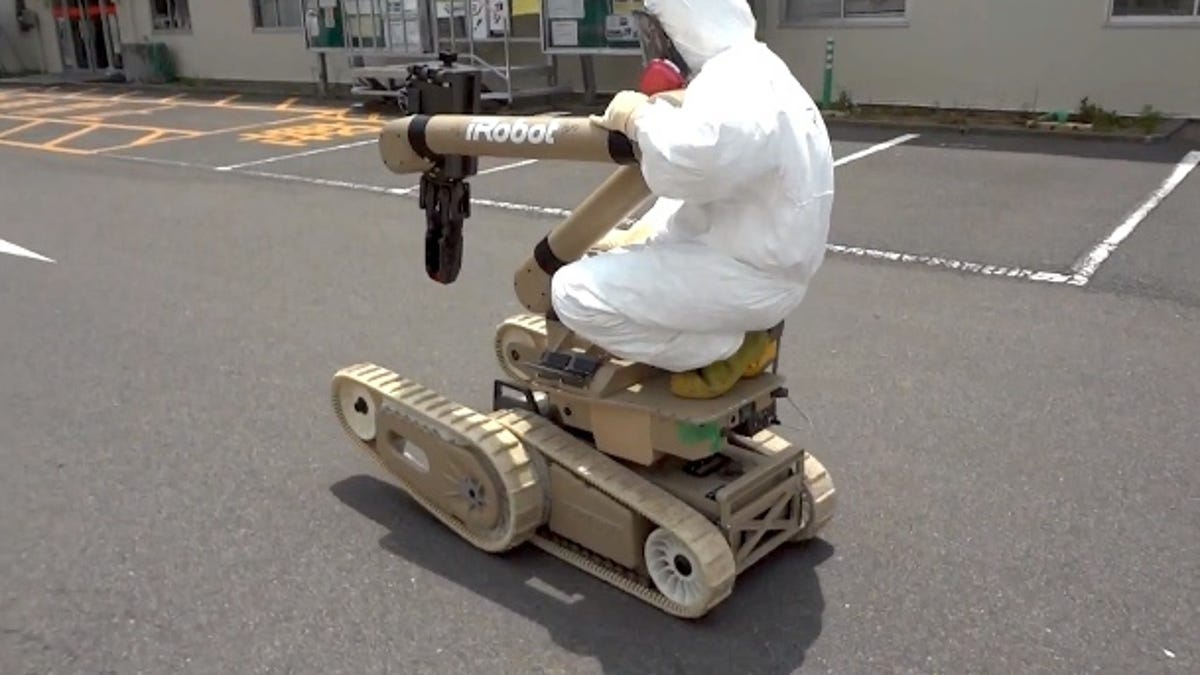Robot pilot describes challenges at Fukushima plant
A blogger operating robots at Japan's leaking Fukushima Daiichi nuclear plant describes the difficulties of his work.

Robot pilots need fun too.
Workers struggling to contain the leaking Fukushima Daiichi nuclear plant in Japan have only a few robots that are able to get deep inside the highly radioactive reactor buildings and piloting them has been very difficult, according to a blog written by one of the workers and republished by IEEE Spectrum.
The postings, written by an author who goes by the initials S.H., began appearing after the March 11 quake and tsunamis that knocked out the plant and ran through July. Many of them detail training sessions, as seen in the associated video compilation below. The blog was deleted last month when word of it spread in Japan, but it has also appeared on the site of AIST, a government-backed research center.
Tokyo Electric Power Company (Tepco) hired contractors, including S.H.'s employer, to help bring the plant to a cold shutdown in January, but the postings paint a picture of an inadequately equipped robot response to the catastrophe. Observers, including your humble correspondent, have wondered why robot-mad Japan wasn't prepared for a major nuclear accident like Fukushima.
S.H. describes the difficulties of getting the team's two iRobot PackBots to climb narrow, damaged stairs and operating them when clothed in heavy protective gear such as four layers of gloves.
He narrates how he accidentally drove an iRobot Warrior into a stairwell wall, punching holes in it, and commenting how difficult it was to get the 550-pound war machine up the stairs: "But what I'm thinking is that the Warrior was not intended for indoor use, was it???" Apparently not.
S.H. also says that the made-in-Japan Quince robot, which was deployed to Fukushima after iRobot sent its machines, was more adept at going up and down stairs than the PackBot and had better camera resolution.
The robot pilots also worked to rig a vacuum cleaner to one of the Warriors so it could suck up radioactive sand and dust in the No. 3 reactor building. While the Warrior went to work, a PackBot dragged an Ethernet cable alongside it to boost the radio signal from the remote controls (the heavy local interference in radio signals has hampered use of the machines). A subsequent survey using PackBots found an average 10 percent drop in radiation levels.
The author acknowledges the frustrating bureaucracy, hardships, and danger of the job, but his tone remains upbeat. He is clearly proud of how he has mastered the fine art of piloting robots through a destroyed nuclear plant, recording the following comment in May.
"I think there are but a very few people in the world who have come to operate robots so agilely. I don't think there are that many even among [the companies] that manufacture them.
"Now is the time for us to show the world the power of Japan's technical and human capabilities, to be able to face this calamity, this natural disaster. I think this is also something that will save Japan and help it resurrect. This kind of natural disaster could happen anywhere. If there is a call for this same kind of work, I'll go anywhere in the world!"
It's unclear what became of S.H. since the blog was taken down, but his writing will no doubt be useful to robot designers and industry officials around the world who have to grapple with the challenge of using robots in nuclear disasters.

